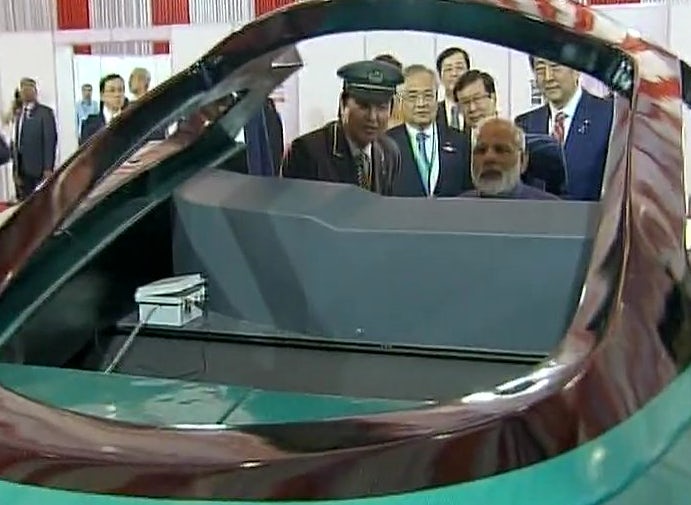Indian Prime Minister Narendra Modi and Japanese Prime Minister Shinzo Abe on Thursday laid the foundation for India’s first bullet train project in Ahmedabad. The high-speed rail project will run between Ahmedabad-Mumbai and is worth Rs 1.08 lakh crore.
The long awaited dream project of Narendra Modi to make India a high tech nation is finally being accomplished with the help Japan. The project is likely to be completed by 2022, the year by which Modi hopes to make a new India.
A 21-km-long tunnel will be dug between Boisar and BKC in Mumbai, seven km of which will be under the sea. The train will run at an average speed of 320 km per hour and at a maximum speed of 350 km per hour. Enroute it will stop at 12 stations for 165 seconds each. The train will be designed to have two seats, executive, and economy with the prices based on the prices of the AC 2 fare of Rajdhani Express.
During the launch, Modi thanked his Japanese counterpart for the big gift of bullet trains to India. He also appreciated Japanese Prime Minister’s personal interest in the project and making it a reality. He said that India has found a friend who is willing to give loans without interest. Modi further emphasised on the Indo-Japanese friendship and relationship from withstanding the test of time.
Japan has loaned Rs 88,000 crore at an interest rate of 0.1% for 50 years to India. Narendra Modi said that India has to pay back the friend in 50 years.
Shinzo Abe said that nothing is impossible to achieve if stood and worked hard for the dream together. He said that “I really like Gujarat & I really like India. I will do whatever I can for India.”
Following the inauguration of the bullet train project both the leaders headed for the 12 India Japan Summit. Narendra Modi along with Shinzo Abe signed a few agreements further strengthening the bilateral ties between India and Japan.
In a joint press statement, 3 sets of documents were exchanged between the two countries. In the first document, four notes were discussed and finalised which stated the construction of Mumbai-Ahmedabad High-speed rail and the construction of international cooperation and convention center in Varanasi.
In the second document, the nations exchanged two MOUs. The first one was between the ministry of external affairs (GOI) and ministry of foreign affairs (Japan)in the field of Japanese language education in India and the second was between the Government Of India and Government of Japan for the India Japan act east forum.
The third document contained the agreement signed between Union Home Ministry and the Japanese government for cooperation and collaboration in the field of disaster risk management. It was also agreed between both the nations that they will share the experience, knowledge, methods, and policies to prevent natural disasters.

